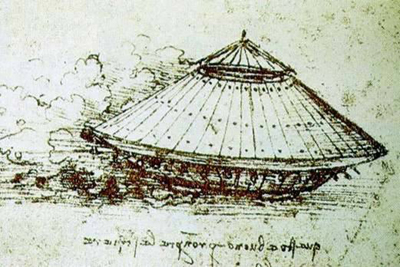Question from Margot L.:
I recently saw a Progressive Insurance commercial about a new discount program. The commercial stated that the program was patented. Is that true?
-Margot L.
I have also seen this commercial and yes, the program is patented. The commercial is referring to Progressive Insurance’s Snapshot discount program. The program bases customer rates on the number of miles and time of day driven and how often sudden stops are made. A device which connects to a cars computer sends information to the company to determine the rates.
Progressive has received a few patents for the methods and systems used in this program. United States Patent 5,797,134 was issued to Progressive Casualty Insurance Company on August 18, 1998 for a motor vehicle monitoring system for determining a cost of insurance. The company also received United States Patent 6,064,970 on May 16, 2000 for Motor vehicle monitoring system for determining a cost of insurance. Then on March 15, 2005, United States Patent 6,868,386 was issued for a monitoring system for determining and communicating a cost of insurance.

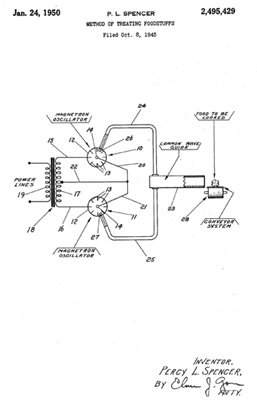 You can add the microwave oven to the list of products invented by accident. Dr. Percy Spencer was not trying to invent a faster way to cook when he discovered the principal behind the microwave oven. Instead, Spencer was working for the Raytheon Corporation testing a new type of vacuum tube known as a magnetron. One day, he discovered that a candy bar which he had in his pocket had melted while working with the magnetron. This led to many more experiments with the tube.
You can add the microwave oven to the list of products invented by accident. Dr. Percy Spencer was not trying to invent a faster way to cook when he discovered the principal behind the microwave oven. Instead, Spencer was working for the Raytheon Corporation testing a new type of vacuum tube known as a magnetron. One day, he discovered that a candy bar which he had in his pocket had melted while working with the magnetron. This led to many more experiments with the tube.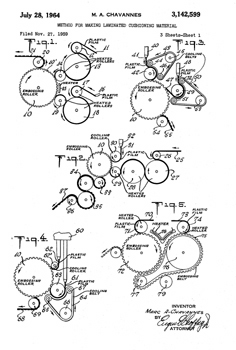 In 1957, Alfred W. Fielding and Marc Chavannes set out to make a new type of wallpaper. Instead, they changed the world of packaging. They were attempting to develop an easy to install and clean wallpaper with a paper backing. The partners sealed two shower curtains together creating a cluster of small bubbles between the two layers. For this invention, they received U.S. Patent No. 3,142,599 on July 28, 1964 for a Method for Making Laminated Cushioning Material.
In 1957, Alfred W. Fielding and Marc Chavannes set out to make a new type of wallpaper. Instead, they changed the world of packaging. They were attempting to develop an easy to install and clean wallpaper with a paper backing. The partners sealed two shower curtains together creating a cluster of small bubbles between the two layers. For this invention, they received U.S. Patent No. 3,142,599 on July 28, 1964 for a Method for Making Laminated Cushioning Material.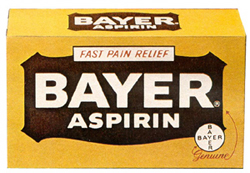 Genericized trademarks are words that used to be brand names but have become ingrained in common speech as a way to refer to all brands of a single product, not just the brand or service of the original trademark holder. A trademark often becomes genericized when one company dominates the market for a single product or is the original manufacturer of a new product. The use of a trademark as a verb will also led to the term becoming generic.
Genericized trademarks are words that used to be brand names but have become ingrained in common speech as a way to refer to all brands of a single product, not just the brand or service of the original trademark holder. A trademark often becomes genericized when one company dominates the market for a single product or is the original manufacturer of a new product. The use of a trademark as a verb will also led to the term becoming generic. 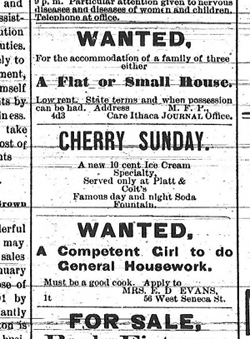 On Sunday, April 3, Google celebrated the anniversary of the first ice cream sundae with one of its famous Google Doodles. But the invention of the sundae celebrated by Google is only one of the stories about how the ice cream treat came to exist. For years, there has been an ongoing debate about how and where the sundae was invented.
On Sunday, April 3, Google celebrated the anniversary of the first ice cream sundae with one of its famous Google Doodles. But the invention of the sundae celebrated by Google is only one of the stories about how the ice cream treat came to exist. For years, there has been an ongoing debate about how and where the sundae was invented.